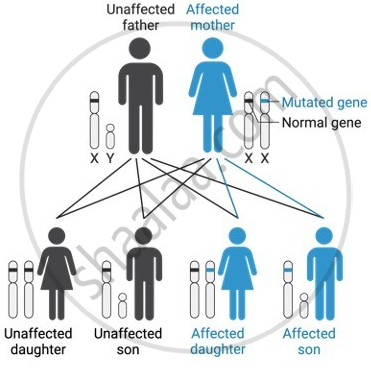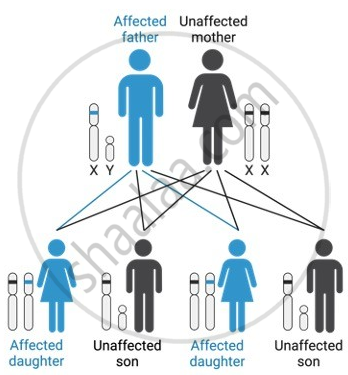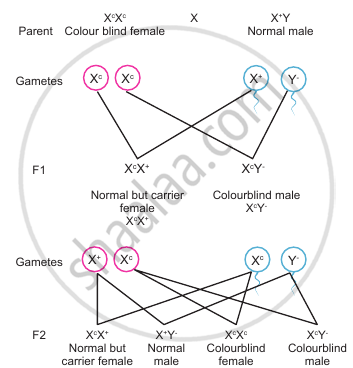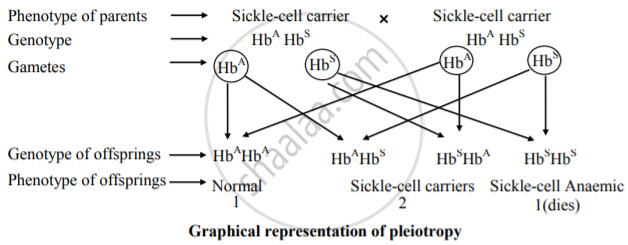Topics
Sexual Reproduction in Flowering Plants
- Flower - a Fascinating Organ of Angiosperms
- Parts of Flower
- Accessory Organs
- Essential Parts of Flower: Androecium
- Essential Parts of Flower: Gynoecium
- Sexual Reproduction in Flowering Plants
- Pre-fertilisation in Flowering Plant: Structures and Events
- Development of Anther
- Transverse Section of Mature Anther (Microsporangium)
- Microsporogenesis
- Microspores and Pollen Grains
- Development of Male Gametophyte
- Advantages and Disadvantages of Pollen Grains
- Structure of Ovule (Megasporangium)
- Types of Ovules
- Megasporogenesis
- Development of Female Gametophyte or Embryo Sac
- Pollination
- Outbreeding Devices
- Artificial Hybridization
- Kinds of Pollination
- Self Pollination (Autogamy)
- Cross Pollination
- Agents of Pollination
- Abiotic Agents
- Biotic Agents
- Fertilization Process
- Fertilization Process
- Post Fertilisation in Plant: Structures and Events
- Development of Endosperm
- Post Fertilization in Plant: Development of Embryo (Embryogeny)
- Development of Seed
- Development of Fruit
- Apomixis
- Polyembryony
Reproduction in Organisms
- Life Span of Organisms
- Maximum Life Span of Organisms
- Reproduction in Organisms
- Types of Reproduction
- Asexual Reproduction
- Sexual Reproduction in Animals
- Asexual Reproduction in Plant
- Asexual Reproduction in Animal
- Budding
- Vegetative Reproduction
- Natural Vegetative Reproduction
- Artificial Vegetative Reproduction
- Artificial Vegetative Reproduction
- Artificial Vegetative Reproduction
- Fission
- Budding
- Sporulation (Sporogenesis)
- Fragmentation
- Different Phases in Sexual Reproduction
- Sexual Reproduction in Animals
- Pre-fertilisation Events in Organisms
- Fertilisation in Organisms
- Post-fertilisation Events in Organisms
Reproduction
Genetics and Evolution
Human Reproduction
Reproductive Health
Biology and Human Welfare
Environmental Issues
- Environmental Issues
- Prevention of Air Pollution
- Controlling Vehicular Air Pollution: a Case Study of Delhi
- Introduction of Water Pollution and Its Control
- Effects of Domestic Sewage and Industrial Effluents on Water
- A Case Study of Integrated Waste Water Treatment
- Solid Wastes
- Agrochemicals and Their Effects
- Radioactive Wastes
- Greenhouse Effect and Climate Change
- Ozone Depletion in the Stratosphere
- Degradation by Improper Resource Utilisation and Maintenance
- Deforestation and Its Causes
- Radioactive Waste Management and E-waste
- Solid Waste Management
- Noise Pollution
- Environmental Issues
Biotechnology
Principles of Inheritance and Variation
- Introduction of Principles of Inheritance and Variation
- Mendelism
- Terminology Related to Mendelism
- Mendel’s experiments on pea plant
- Monohybrid Cross
- Gregor Johann Mendel – Father of Genetics
- Punnett Square
- Back Cross and Test Cross
- Mendelian Inheritance - Mendel’s Law of Heredity
- The Law of Dominance
- The Law of Segregation (Law of Purity of Gametes)
- The Law of Independent Assortment
- Intragenic Interactions - Incomplete Dominance
- Intragenic Interactions - Codominance
- Gregor Johann Mendel – Father of Genetics
- Extensions of Mendelian Genetics (Deviation from Mendelism)
- Intragenic Interactions - Incomplete Dominance
- Intragenic Interactions - Dominance
- Intragenic Interactions - Codominance
- Multiple Alleles
- Intragenic Interactions - Pleiotropy
- Polygenic Inheritance
- Chromosomal Theory of Inheritance
- Historical Development of Chromosome Theory
- Comparison Between Gene and Chromosome Behaviour
- Chromosomal Theory of Inheritance: Law of Segregation
- Chromosomal Theory of Inheritance: Law of Independent Assortment
- Linkage and Recombination
- Sex Determination
- Sex Determination in Some Insects
- Sex Determination in Human
- Sex Determination in Birds
- Sex Determination in Honey Bees
- Concept of Mutation
- Pedigree Analysis
- Genetic Disorders
- Mendelian Genetics
- Chromosomal Abnormalities
- Heredity and Variation
- Linkage and Crossing Over
- Principles of Inheritance and Variation Question
Molecular Basis of Inheritance
- Introduction of Molecular Basis of Inheritance
- Deoxyribonucleic Acid (DNA) and Its Structure
- Structure of Polynucleotide Chain
- Packaging of DNA Helix
- Search for Genetic Material
- Introduction of Search for Genetic Material
- The Genetic Material is a DNA
- Properties of Genetic Material (DNA Versus RNA)
- The RNA World
- DNA Replication
- The Experimental Proof
- The Machinery and the Enzymes
- Protein Synthesis
- Introduction of Transcription
- Transcription Unit
- Transcription Unit and the Gene
- Types of RNA and the Process of Transcription
- Genetic Code
- Genetic Code
- Genetic Code
- tRNA – the Adapter Molecule
- Translation
- Regulation of Gene Expression
- Operon Concept
- Human Genome Project
- DNA Fingerprinting Technique
- Structure of DNA and RNA
- Structure of Nucleotide
- Rice Genome Project
- Molecular Basis of Inheritance (Questions)
Ecology
Evolution
- Origin and Evolution of Universe and Earth
- Theories of Origin of Life
- Evolution of Life Forms - a Theory
- Evidences for Biological Evolution
- Theories of Biological Evolution
- Adaptive Radiation
- Organic Evolution
- Hardy Weinberg’s Principle
- Brief Account of Evolution
- Human Evolution
- Darwinism
- Micro and Macro Evolution
- Speciation
- Evolution Stages
- Modern Synthetic Theory of Evolution
- Gene Flow and Genetic Drift
- Evolution
Human Health and Diseases
- Introduction of Human Health and Diseases
- Common Diseases in Human Beings
- Immunity
- Types of Immunity
- Vaccination and Immunization
- Allergies (Hypersensitivity)
- Autoimmunity
- Human Immune System
- Sexually Transmitted Diseases (STD)
- Cancer
- Introduction of Drugs and Alcohol Abuse
- Drugs and Alcohol Abuse
- Adolescence - Drug and Alcohol Abuse
- Addiction and Dependence
- Effects of Drug and Alcohol
- Prevention and Control of Drugs and Alcohol Abuse
- Infectious and Non Infectious Disease
- Maintaining Good Health, Yoga, Excercise
- Human Health and Diseases (Questions)
Strategies for Enhancement in Food Production
Microbes in Human Welfare
- Microbes in Human Welfare
- Microbes in Household Products
- Microbes in Industrial Production
- Microbes in Sewage Treatment
- Microbes in Production of Biogas
- Microbes as Biocontrol Agents
- Microbes as Biofertilizers
- Energy Generation
- Production and Judicious Use
- Microbes in Human Welfare
Biotechnology - Principles and Processes
- Process and Principles of Biotechnology
- Restriction Enzymes
- Cloning Vectors
- Competent Host (For Transformation with Recombinant DNA)
- Processes of Recombinant DNA Technology
Biotechnology and Its Application
Organisms and Populations
- Introduction of Organisms and Populations
- Ecology (Organism, Population, Community and Biome)
- Introduction of Organisms and Environment
- Major Abiotic Factors
- Responses to Abiotic Factors
- Population Attributes
- Population Growth
- Life History Variation
- Population Interactions
- Population and Ecological Adaptations
- Organisms and Populations (Questions)
Ecosystem
- Ecosystem
- Introduction and Types of Ecosystem
- Ecosystem - Structure and Function
- Productivity
- Decomposition
- Concept of Energy Flow in an Ecosystem
- Ecological Pyramids
- Ecological Succession
- Nutrient Cycles
- Ecosystem Services
- Ecosystems Patterns
Biodiversity and Its Conservation
- Biodiversity
- Species on Earth and Species in India
- Patterns of Biodiversity
- Importance of Species Diversity to the Ecosystem
- Loss of Biodiversity
- Conservation of Biodiversity
- Endangered Organisms
- Importance of Biodiversity
- Extinction
- Red Data Book
- Biodiversity and Its Conservation (Questions)
- Haemophilia
- Colour blindness
- Sickle-cell anaemia
- Thalassemia
- Phenylketonuria
- Albinism
- Huntington’s chorea
Notes
Mendelian disorders:
- Mendelian disorders are mainly determined by alteration or mutation in a single gene.
- These disorders are transmitted to the offspring on the same lines as the Mendelian pattern of inheritance.
- Most of the common Mendelian disorders are Haemophilia, Cystic fibrosis, Sickle-cell anaemia, Colour blindness, Phenylketonuria, Thalassemia, albinism, Huntington's chorea, etc.
- These disorders may be dominant or recessive and autosomal or sex-linked.
- The pattern of inheritance of Mendelian disorders can be traced in a family by 'pedigree analysis'.
- A pedigree analysis may help to understand if a disorder is:
i) Dominant or Recessive disorder
ii) Sex-linked disorder (X-linked) (e.g. Haemophilia)
Only under such circumstances female will be homozygous recessive and would develop the disease. Thus, the chance of females becoming haemophilic is extremely rare.
Notes
1) Haemophilia:
- Haemophilia is commonly known as bleeder’s disease, which is more common in men than women.
- This hereditary disease was first reported by John Cotto in 1803.
- Haemophilia is caused by a recessive X-linked gene.
- A person with a recessive gene for haemophilia lacks a normal clotting substance (thromboplastin) in blood, hence minor injuries cause continuous bleeding, leading to death.
- The females are carriers of the disease and would transmit the disease to 50% of their sons even if the male parent is normal. Example - The family pedigree of Queen Victoria shows a number of haemophilic descendents as she was a carrier of the disease.
- Haemophilia follows the characteristic criss-cross pattern of inheritance.
- Genotypes of different individuals can be represented as follows:
- When a man with normal blood clotting marries a carrier woman, one of their sons may be haemophilic.

- If a haemophilic male marries a female with normal blood clotting, then all the offspring will have normal blood clotting. The sons will have normal blood clotting but the daughters will be carriers for the disease. The carriers have normal blood clotting.

Notes
2) Colour Blindness:
- It is a sex-linked recessive disorder.
- Colour blindness is a defect in either red or green cone of the eye resulting in failure to discriminate between red and green colour.
- This defect is due to mutation in certain genes present in the X chromosome.
- It occurs in about 8% of males and only about 0.4% of females. This is because the genes that lead to red-green colour blindness are on the X chromosome. Males have only one X chromosome and females have two. The son of a woman who carries the gene has a 50% chance of being colour blind. The mother is not herself colour blind because the gene is recessive. That means that its effect is suppressed by her matching dominant normal gene. A daughter will not normally be colour blind unless her mother is a carrier and her father is colour blind.
- In human beings, a dominant X-linked gene is necessary for the formation of colour sensitive cells, the cones. The recessive form of this gene is incapable of producing colour sensitive cone cells.
- Homozygous recessive females (XcXc) and hemizygous recessive males (XcY) are unable to distinguish red and green colour. The inheritance of colour blindness can be studied in the following two types of marriages.
- Marriage between colour blind man and normal visioned woman:
A marriage between a colour blind man and a normal visioned woman will produce normal visioned male and female individuals in F1 generation but the females are carriers. The marriage between a F1 normal visioned carrier woman and a normal visioned male will produce one normal visioned female, one carrier female, one normal visioned male and one colour blind male in F2 generation. The colour blind trait is inherited from the male parent to his grandson through carrier daughter, which is an example of criss-cross pattern of inheritance.

Marriage between colour blind man and normal visioned woman
- Marriage between normal visioned man and colour blind woman:
If a colour blind woman (XcXc) marries a normal visioned male (X+Y), all F1 sons will be colourblind and daughters will be normal visioned but are carriers. Marriage between F1 carrier female with a colour blind male will produce normal visioned carrier daughter, colour blind daughter, normal visioned son and a colourblind son in the F2 generation.

Marriage between normal visioned man and colour blind woman
Notes
3) Sickle-cell anaemia:
- This is an autosome-linked recessive trait that can be transmitted from parents to the offspring when both partners are carrier for the gene (or heterozygous).
- The disease is controlled by a single pair of allele, HbA and HbS.
- This gene is lethal in homozygous condition (HbsHbs).
- The individual who receives a single copy of the gene (heterozygous) is not affected but is a carrier of the disease. Such individual has genotype (HbAHbs).
- This disease is caused by a mutation which substitutes the Glutamic acid (Glu) by Valine (Val) at the 6th position in the beta glob in chain of the haemoglobin molecule.
- This is a result of a single. base substitution from G A G to G U G at the sixth codon of β-globin gene.
- The substitution leads to formation of mutant haemoglobin. Mutant haemoglobin molecule undergoes polymerization under low oxygen tension which causes change in the shape of RBC.
- A normal RBC has a biconcave structure. In sickle cell anaemia sufferers, RBCs become elongated and obtain a sickle shape.

Notes
4) Thalassemia:
- Thalassemia is an autosomal recessive disorder.
- It is caused by gene mutation resulting in excessive destruction of RBC’s due to the formation of abnormal haemoglobin molecules.
- Normally haemoglobin is composed of four polypeptide chains, two alpha, and two beta globin chains.
- Thalassemia patients have defects in either the alpha or beta globin chain causing the production of abnormal haemoglobin molecules resulting in anaemia.
- Thalassemia is classified into alpha and beta based on which chain of haemoglobin molecule is affected.
- It is controlled by two closely linked genes HBA1 and HBA2 on chromosome 16.
- Mutation or deletion of one or more of the four alpha gene alleles causes Alpha Thalassemia.
- In Beta Thalassemia, the production of the beta-globin chain is affected. It is controlled by a single gene (HBB) on chromosome 11.
- It is the most common type of Thalassemia and is also known as Cooley’s anaemia.
- In this disorder, the alpha chain production is increased and damages the membranes of RBC.
Notes
5) Phenylketonuria:
- It is an inborn error of Phenylalanine metabolism caused due to a pair of autosomal recessive genes.
- It is caused due to mutation in the gene PAH (phenylalanine hydroxylase gene) located on chromosome 12 for the hepatic enzyme “phenylalanine hydroxylase”.
- This enzyme is essential for the conversion of phenylalanine to tyrosine.
- Affected individual lacks this enzyme, so phenylalanine accumulates and gets converted to phenylpyruvic acid and other derivatives.
- It is characterized by severe mental retardation, light pigmentation of skin and hair. Phenylpyruvic acid is excreted in the urine because of its poor absorption by kidney.

Notes
6) Albinism:
- Albinism is an inborn error of metabolism, caused due to an autosomal recessive gene.
- Melanin pigment is responsible for skin colour.
- Absence of melanin results in a condition called albinism.
- A person with the recessive allele lacks the tyrosinase enzyme system, which is required for the conversion of dihydroxyphenyl alanine (DOPA) into melanin pigment inside the melanocytes.
- In an albino, melanocytes are present in normal numbers in their skin, hair, iris, etc., but lack melanin pigment.

Notes
7) Huntington’s chorea:
- It is inherited as an autosomal dominant lethal gene in man.
- It is characterized by involuntary jerking of the body and progressive degeneration of the nervous system, accompanied by gradual mental and physical deterioration.
- The patients with this disease usually die between the age of 35 and 40.
If you would like to contribute notes or other learning material, please submit them using the button below.
